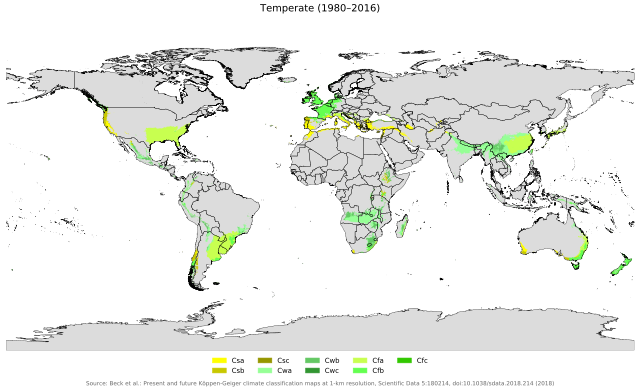
Temperate climate
Main climate class / From Wikipedia, the free encyclopedia
Dear Wikiwand AI, let's keep it short by simply answering these key questions:
Can you list the top facts and stats about Southern temperate zone?
Summarize this article for a 10 year old
In geography, the temperate climates of Earth occur in the middle latitudes (approximately 23.5° to 66.5° N/S of Equator), which span between the tropics and the polar regions of Earth.[1] These zones generally have wider temperature ranges throughout the year and more distinct seasonal changes compared to tropical climates, where such variations are often small and usually only have precipitation differences.[2]


In temperate climates, not only do latitudinal positions influence temperature changes, but various sea currents, prevailing wind direction, continentality (how large a landmass is) and altitude also shape temperate climates.[3]
The Köppen climate classification defines a climate as "temperate" C, when the mean temperature is above −3 °C (26.6 °F) but below 18 °C (64.4 °F) in the coldest month to account for the persistence of frost. However, some adaptations of Köppen set the minimum at 0 °C (32.0 °F). Continental climates, classified separately as "continental" D according to Köppen, are considered as a variety of temperate climates but have more severe temperatures, with mean temperatures of the coldest month usually being below −3 °C (26.6 °F).